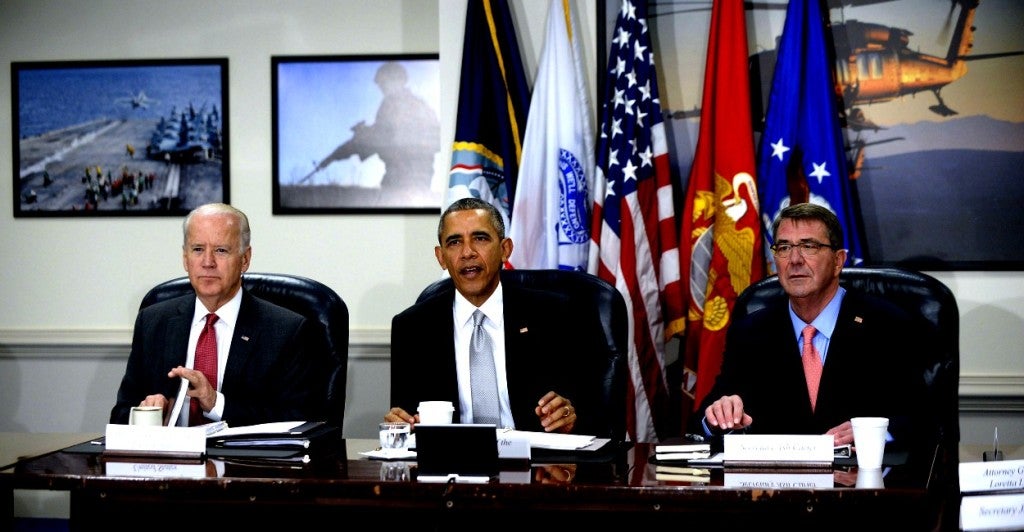Secretary of Defense Ashton Carter’s recent op-ed regarding the campaign against ISIS confirmed what many already knew: When confronting ISIS, the Obama administration does the bare minimum required to make it look as if it is doing something, while in reality it is doing very little.
President Barack Obama entered office with a hell-bent desire to “end wars” with no care as to how he would do this.
President Barack Obama entered office with a hell-bent desire to “end wars” with no care as to how he would do this—or to what the geo-strategic consequences might be if it was done poorly.
In 2010, after the White House failed to secure an agreement with Baghdad that would have allowed sizable U.S. forces to remain in Iraq, Obama declared the war in Iraq over. As subsequent events have shown, a war is not over simply because the president of the United States says it is.
Instead of a responsible phased withdrawal of U.S. troops from Iraq, the U.S. cut and run. The White House says they did not have a choice—that it was Iraq that refused to sign an agreement to allow U.S. troops to remain. But the truth is that Obama did not use all of America’s political, economic, security, and diplomatic clout in Baghdad to secure an agreement for U.S. troops to remain. When the Iraqis said no, Obama was only too happy to oblige.
Five years later, ISIS controls huge swathes of the Sunni heartland, including Iraq’s second largest city, Mosul. Iran has more influence in Baghdad than ever before and calls the shots in the Shia-dominated southern part of the country. The Kurds, who were forced to fight—literally—for their livelihoods, have essentially carved out a de facto nation-state that includes important oil-producing cities like Kirkuk.
Put simply, Iraq is a mess.
Obama’s response to the rise of ISIS and the deterioration of Iraq has been incremental. He has chosen to do the bare minimum required to make it look as though he is doing something, but in actuality he is doing next to nothing at all.
Incremental troop increases to Iraq, a few thousand trainers in Iraq, and an aircraft carrier repositioned in the Persian Gulf do not constitute a strategy.
The drip of U.S. forces back into the region is absent of a strategy and is the hallmark of a president in denial about the true security challenges the U.S. faces in the region, not only by ISIS, but also by Iran.
Ashton Carter’s recent remarks show how back-footed the U.S. is in fighting ISIS. His answer: the possibility of more U.S. troops in the region. How many troops? What will their mission be? Is there now a strategy?
If Carter knows the answers to any of these questions, he does not say.
Obama has little interest in confronting or desire to confront the threat ISIS poses. Having won his Nobel Peace Prize already and “ended” the wars in Afghanistan and Iraq, he will ride out the remaining months of his tenure by incrementally positioning U.S. forces in the region. This is a façade.
The next U.S. president will inherit a festering situation in the Middle East that is a result of Obama’s quixotic view of the world coupled with his incessant indecisiveness.
As research from The Heritage Foundation has pointed out, taking on ISIS in Iraq and checking them in Syria will require a significant ground force component. It will also require a strategy to help Jordan, Lebanon, and Turkey with the refugee crisis and their security.
It will also require backing the Kurds with more military firepower, getting the Iraqi army back into the fight, and helping the political elite in Baghdad overcome Iraq’s toxic sectarian divisions that push Sunnis to ISIS and Shias to Iran.
Until the U.S. decides to get in it to win it and develops a strategy with all the resources needed to implement it, ISIS will continue its march.
